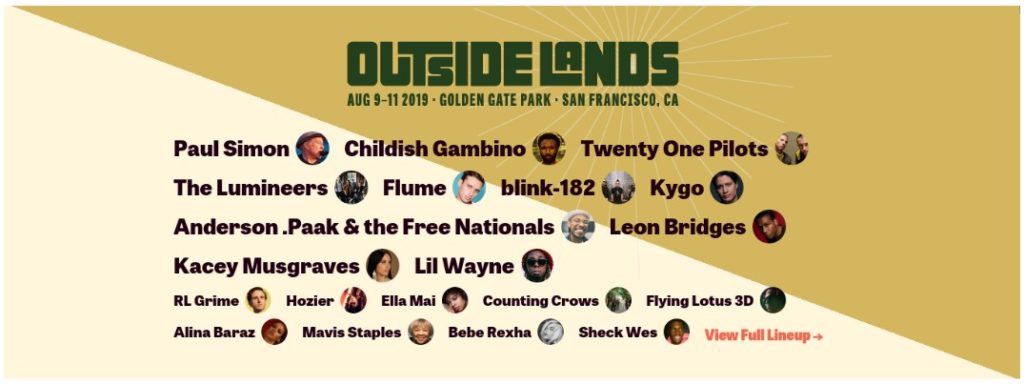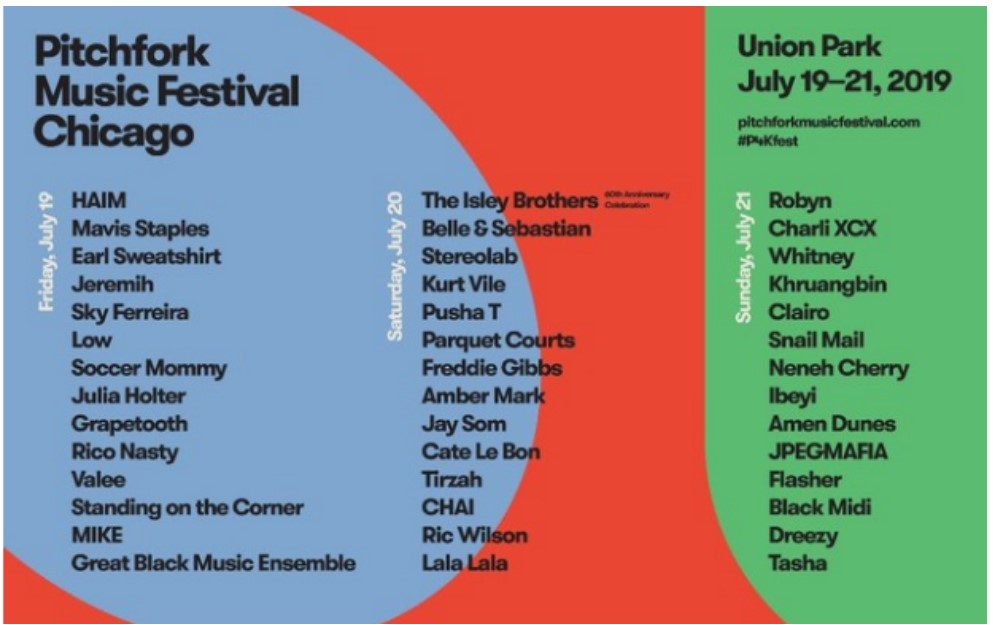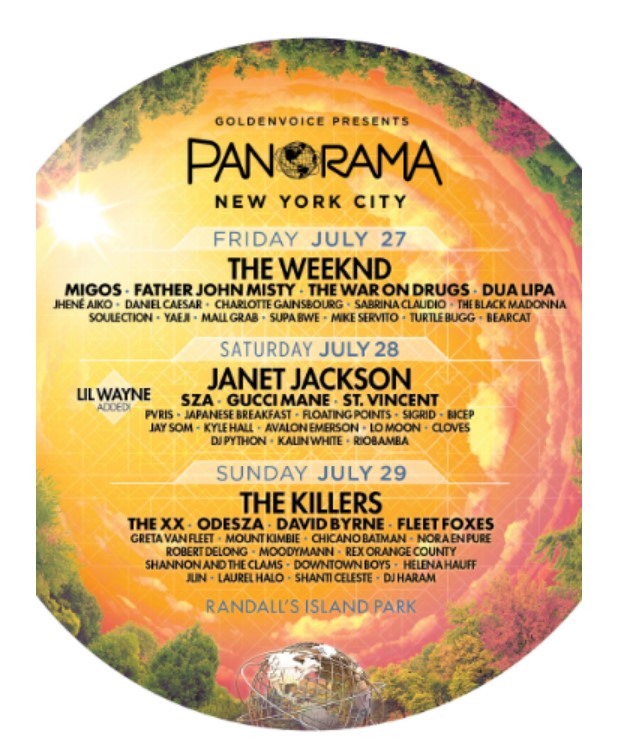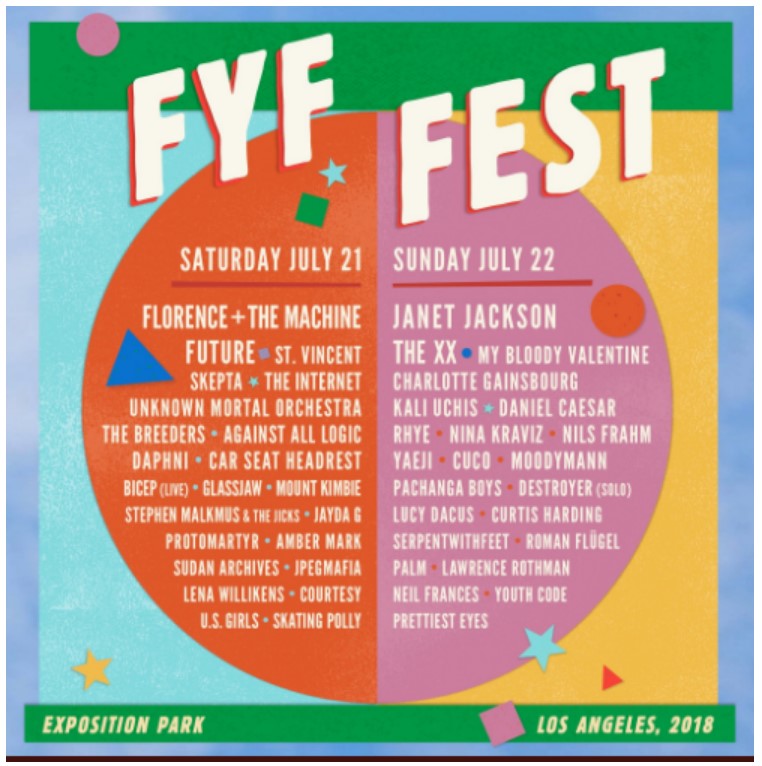In the promotional release of artists performing at Outside Lands, a female artist does not appear until the fourth row. Kacey Musgraves is one of four women listed of the 20 artists shown.

The ongoing pattern among American music festivals is that female artists often appear in the smallest font, many rows beneath their male counterparts who dominate the large font arena. In fact, when comparing the top 20 music festivals throughout the United States, only a quarter of the artists booked are female or groups that contain at least one female band member. While this is not exactly equitable, this percentage represents a major stride in female representation from previous year’s line-ups. Since 2017, female artists booked to perform at festivals has increased by 19%. It still stands, however, that 70% of artists that don these stages are male or a part of an all-male band.
Pitchfork Music Festival in Chicago, Panorama Music Festival in New York City, and FYF Fest in Los Angeles all have one thing in common: they are all top-selling music festivals that offer the greatest diversity of male and female artists and bands. It should be noted that no American music festival has ever had a truly 50/50 lineup, but we could take cues from Europe, which pledges to book gender-equal lineups by 2020.

Pitchfork Festival is a three-day music event that features two female headliners: Haim and Robyn. Of the 42 artists, 23 are female performers or feature at least one female band mate. In this instance, the odds are actually stacked in favor of female representation.

Panorama Music Festival has not released a lineup for 2019, but its most recent lineup in 2018 featured one female headliner: Janet Jackson. Panorama represents another instance where female artists actually outweigh their male counterparts, Of the 54 artists who performed at the 2018 festival, 28 were female or bands that had at least one female member.

It is worth noting that despite the heightened female representation of FYF Fest 2018, the festival was ultimately cancelled due to low ticket sales. Subsequently FYF Fest will not return in 2019. The LA Times wrote an interesting article on why this cancellation was such a major setback for gender equality which is worth reading. It is also worth noting that FYF Fest is the only festival thus far to give female artist prominent headliner positions for both days of the event. If the event happened it would have had 47 artists, comprising of 20 female artists or bands that include at least one female group member.
Female artists who are booked typically come from the electronic house, hip-hop, and indie music genres. Rock and pop remain largely male represented genres. Outside Lands, a music festival held in San Francisco, spans three days from August 9-11. Of the 77 artists set to perform, 17 are female or contain a female band member- that’s a line-up comprising of 22% female representation, lower than the national average. When we break it down, each of these female artists fits nicely within the three music genres their gender seems to represent. Santigold, Yaeji, Aurora, and Delacey represent for electronic and house music; Ella Mai, Alina Baraz, Mavis Staples, Tierra Whack, and CupcakKe represent for hip-hop and R&B; and Kacey Musgraves, Cherry Glazer, Miya Folick, Fatai, and Rainbow Girls represent for indie, folk, and country. There are only two female pop artists included in the lineup: Bebe Rexha and Bea Miller.
In its eleven-year history so far, Outside Lands has only featured three female headliners: Lorde in 2017, and Janet Jackson, and Florence & The Machines in 2018. Female headliners could provide a breath of fresh air into the mostly male music festival circuit. Just last year, Eminem headlined not one, but five music festivals: Coachella, Boston Calling, Governor’s Ball, Bonnaroo, and Firefly. Other artists and groups that were repeat offenders in line-ups across festivals in 2018 included Chromeo, Odesza, Tyler the Creator, and Portugal. The Man. Kali Uchis was the only female artist to perform at more than one music festival last year. Which begs the question: if festival-goers are hankering for a fresh sound, why not meet the demands by incorporating more female artists?
If I could garner a guess as to why gender inequality still prevails in the music festival scene it would have something to do with emulation. Smaller festivals cannot afford to take progressive risks so they emulate the industry standard set by festivals, like Coachella, which serves to amplify the ongoing systemic bias that believes “men sell out more shows, or men bring in more people and profit, or the headliner is more enticing if they are male.” To balance the diversity of gender and genre would mean shifting the festival culture from the top-down. If that means we have more acts like Beyonce and Lady Gaga headlining, I’m here for it.
By: Rachel Ladeby

